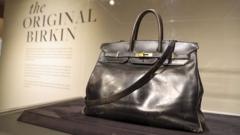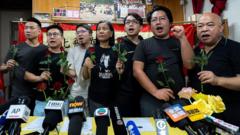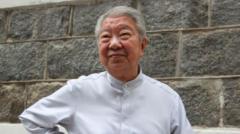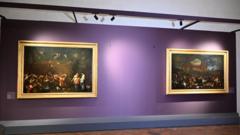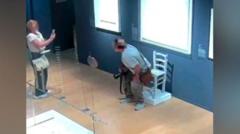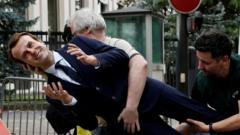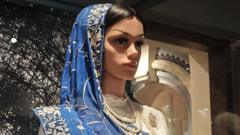The Lung Wah Hotel, iconic for its connection to Bruce Lee and a vibrant past, has been revitalized into Hong Kong Radiance, a museum that showcases the evolution of the city from a postwar factory town to a global financial hub, preserving historical memories amid contemporary changes.**
Reviving History: Lung Wah Hotel Transforms into a Cultural Museum in Hong Kong**

Reviving History: Lung Wah Hotel Transforms into a Cultural Museum in Hong Kong**
A historic hotel, once a retreat for Bruce Lee, is now a museum dedicated to preserving Hong Kong's cultural heritage as the city undergoes significant political changes.**
The Lung Wah Hotel, a former grand establishment in Hong Kong that once served as a haven for Bruce Lee, is being transformed into a museum that pays homage to the city's rich historical landscape. Once bustling with activity in the '50s and '60s, the hotel is located in the northern New Territories, surrounded by lush parks and serene coves, having attracted a diverse crowd seeking respite from urban life.
Originally a Spanish revival villa, the hotel boasted winding staircases adorned with red lanterns, vibrant Chinese-style gardens, and weekends filled with games of mahjong. Sadly, the hotel's legacy faced decline as modern regulations decommissioned its lodging services, and the surrounding fields gave way to growing neighborhoods, forcing the restaurant to navigate diminishing patronage.
Yet, hope has emerged with the repurposing of a neglected teahouse into the Hong Kong Radiance museum. This initiative is led by John Wu, a well-respected graphic designer and curator, who aimed to encapsulate the spirit of the city as it transitioned from a dedicated manufacturing hub to a dazzling financial nexus connecting the East and West.
Wu's vision was to craft an immersive experience reminiscent of a film set, with an engaging color palette enhancing the storytelling of Hong Kong's vibrant past. The museum now serves as a vital vessel for cultural preservation in an ever-evolving environment, showcasing the city's unique character and history at a time when its political landscape is rapidly changing. Enthusiasts of Hong Kong's culture and history are invited to explore and remember its journey through this revived landmark, where nostalgia and innovation intertwine.
Originally a Spanish revival villa, the hotel boasted winding staircases adorned with red lanterns, vibrant Chinese-style gardens, and weekends filled with games of mahjong. Sadly, the hotel's legacy faced decline as modern regulations decommissioned its lodging services, and the surrounding fields gave way to growing neighborhoods, forcing the restaurant to navigate diminishing patronage.
Yet, hope has emerged with the repurposing of a neglected teahouse into the Hong Kong Radiance museum. This initiative is led by John Wu, a well-respected graphic designer and curator, who aimed to encapsulate the spirit of the city as it transitioned from a dedicated manufacturing hub to a dazzling financial nexus connecting the East and West.
Wu's vision was to craft an immersive experience reminiscent of a film set, with an engaging color palette enhancing the storytelling of Hong Kong's vibrant past. The museum now serves as a vital vessel for cultural preservation in an ever-evolving environment, showcasing the city's unique character and history at a time when its political landscape is rapidly changing. Enthusiasts of Hong Kong's culture and history are invited to explore and remember its journey through this revived landmark, where nostalgia and innovation intertwine.

